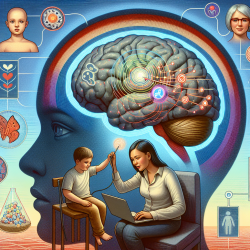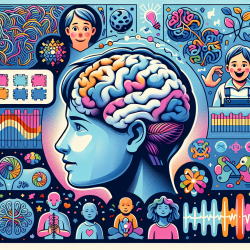Leveraging NIH Rehabilitation Research to Enhance Online Therapy Outcomes

The field of rehabilitation research is continuously evolving, driven by innovative studies and substantial investments from institutions like the National Institutes of Health (NIH). A pivotal conference titled “Rehabilitation Research at NIH: Moving the Field Forward” has yielded significant insights that can enhance the practice of online therapy, particularly for children. As practitioners dedicated to data-driven decisions, integrating these findings can significantly improve therapy outcomes.
Key Takeaways from NIH Rehabilitation Research
The NIH conference highlighted several areas crucial for advancing rehabilitation research, which are directly applicable to online therapy services:
- Integrated Care Models: Moving away from isolated interventions to integrated care approaches, especially in pediatric rehabilitation, can enhance outcomes. Teletherapy platforms like TinyEYE can benefit from this by incorporating multi-disciplinary teams and continuous care models.
- Technology in Rehabilitation: The use of advanced technologies, including telehealth, mobile health, and neuroprosthetics, is revolutionizing rehabilitation. For online therapy, integrating tools like virtual reality and interactive apps can provide engaging and effective interventions for children.
- Participatory Action Research: Involving children and their families in the research process ensures that therapy is tailored to their specific needs. This approach can improve the relevance and effectiveness of online therapy programs.
- Data-Driven Decisions: Utilizing big data and sophisticated analytics can help in tracking progress and tailoring interventions. Teletherapy platforms should leverage data from sessions to refine and personalize therapy plans continuously.
- Preventing Secondary Disabilities: Early intervention and continuous monitoring are crucial. Online therapy can play a significant role in providing timely interventions and reducing the risk of secondary disabilities in children.
Implementing Research Findings in Online Therapy
To integrate these findings into your practice, consider the following strategies:
- Adopt Integrated Care Models: Collaborate with other healthcare providers to create a holistic care plan for each child. This can include regular consultations with pediatricians, occupational therapists, and other specialists.
- Leverage Advanced Technologies: Incorporate interactive tools and applications that engage children and make therapy sessions more effective. Virtual reality, for instance, can be used to create immersive therapy experiences.
- Engage Families in the Process: Use participatory action research methods to involve families in setting goals and evaluating progress. This ensures that therapy is aligned with the child's needs and family expectations.
- Utilize Data Analytics: Implement data tracking systems to monitor therapy outcomes and make data-driven adjustments to therapy plans. This can help in identifying patterns and tailoring interventions to each child's progress.
- Focus on Early Intervention: Provide early and continuous interventions to prevent the development of secondary disabilities. Regular assessments and timely adjustments to therapy plans are crucial.
Encouraging Further Research
While implementing these strategies can significantly enhance therapy outcomes, continuous research is essential. Practitioners are encouraged to stay updated with the latest research, participate in studies, and contribute to the growing body of knowledge in rehabilitation science.To read the original research paper, please follow this link:
Rehabilitation Research at the National Institutes of Health.
Citation: Frontera, W. R., Bean, J. F., Damiano, D., Ehrlich-Jones, L., Fried-Oken, M., Jette, A., ... & Thompson, A. (2017). Rehabilitation research at the National Institutes of Health: Moving the field forward (executive summary). Neurorehabilitation and Neural Repair, 31(4), 304-314. https://doi.org/10.1177/1545968317698875










